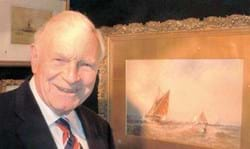One involves tales of rags-to-riches discoveries, epitomised by the 18th century John Bartlam teapot bought originally for £15 and sold last month for £460,000. Publications and broadcasters of every hue and type covered this story, with relish.
Last week the world’s media licked their lips at another antiques story, one that reinforced the second popular narrative about the antiques business: that it is an arcane, sometimes nefarious world of fakes, stolen property and shady deals.
As a relatively small sector, the art market fortunately generates huge amounts of airtime and column inches.
So how can we focus this media attention on the positive, and away from the negative (which in turn attracts regulator attention)? One solution came last week from TEFAF Maastricht chairman, Nanne Dekking.
Speaking as the fair began, Dekking declared that “the tanks are on the lawn” for the art market when it comes to transparency. It needs to conduct itself with less secrecy to avoid external regulation and encourage millennial buyers of art who are “more risk averse”.
While shedding its centuries-old cloak of secrecy might prove uncomfortable for the art market, the prospect of a new buyer base as well as better headlines will surely ease the pain.














